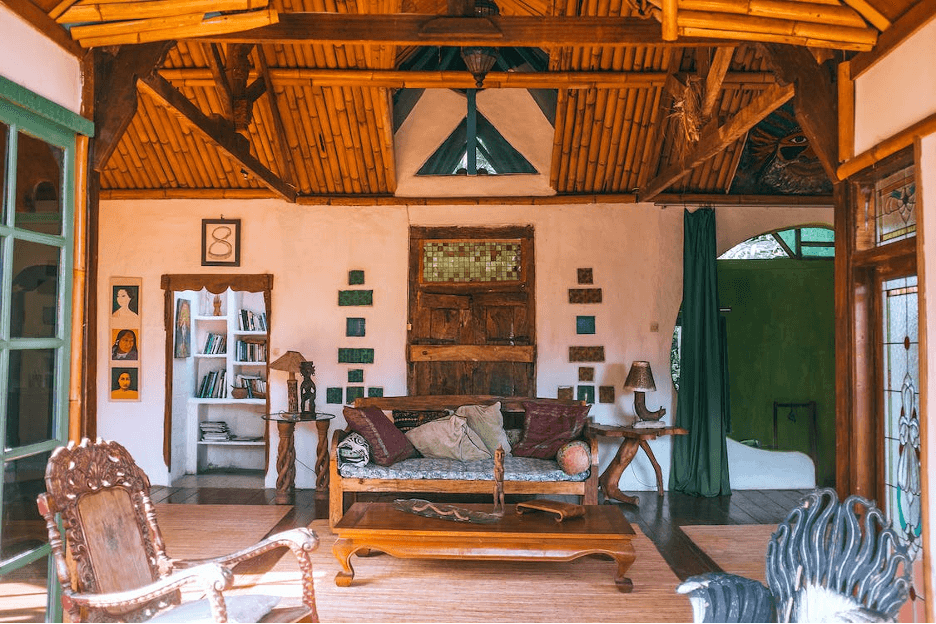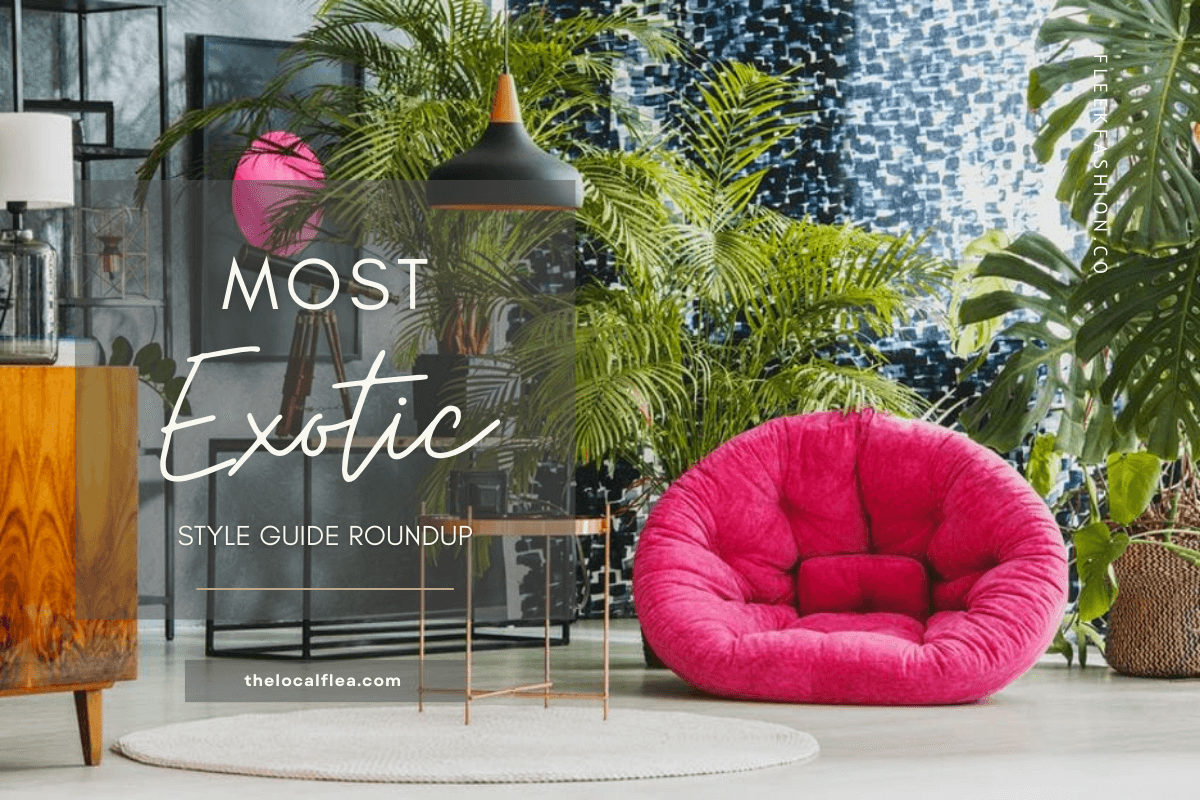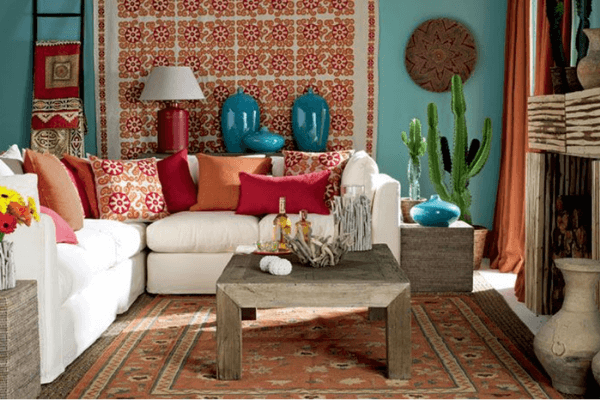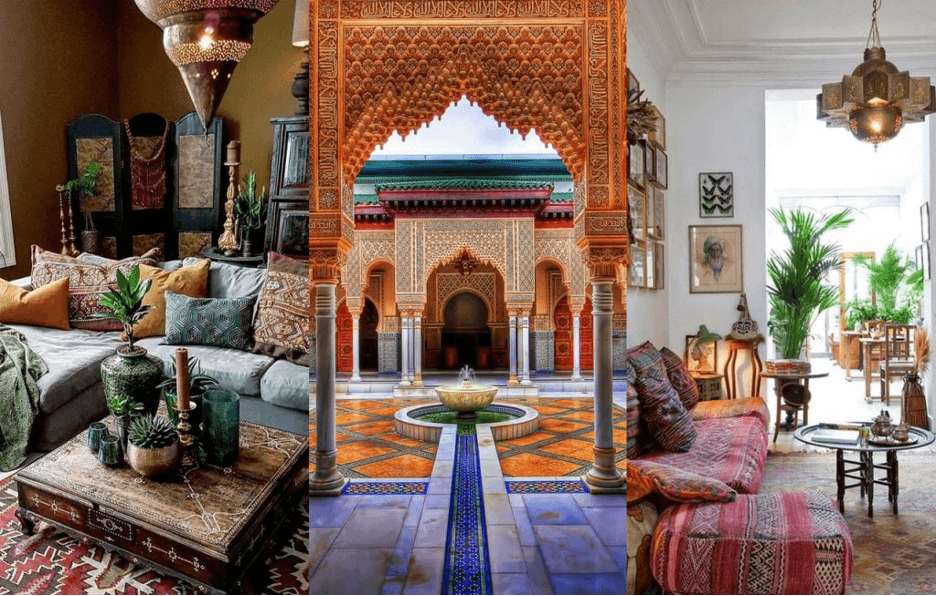For those looking to uplevel the creative look of their home, folk art home style is one of the easiest ones to adopt. Folk art is, as defined by Britannica:
“...the creative expression of the human struggle toward civilization within a particular environment through the production of useful but aesthetic buildings and objects.”
Simply put, it is the prolonged survival of tradition – visual art crafted by an individual or a group of people, predominantly utilitarian or functional and is either crafted by hand or through limited mechanical means. Folk art is the storied expression of a people’s tradition, culture, and beliefs.
Diving into the History of the Folk
 Broadly, folk art is the art of the people, separate from art forms that result in professional and elite products that make up mainstream or popular art. It is also distinguished from “primitive” art, which encompasses the work of preliterate and prehistoric peoples.
Broadly, folk art is the art of the people, separate from art forms that result in professional and elite products that make up mainstream or popular art. It is also distinguished from “primitive” art, which encompasses the work of preliterate and prehistoric peoples.
Historically, however, the terms folk and popular have been used interchangeably in the field of art – the former being specific in English and German (Volkskunst) and the latter in the Romance languages (populaire, popolare). The distinction between both terms is also not absolute; some folk art products like chalkwares (which are painted plaster ornamental figures) have become widely popular in America. Folk art has also become one of the foundations of popular art, as it has provided a natural source of ideas, motifs, and products.
Still, popular art has grown separate from folk art, in that it is now widely used to refer to commercially created or mass-produced items that meet the taste of the public.
Folk art started to get recognized as its own category in the late 19th century, first limited to what Europeans referred to as peasant art or the “art of the land.” Intellectuals at the time attached such romantic value to the life of the simple folk and recognized that their tools, utensils, and crafts had aesthetic aspects.
As sophistication and localism advanced, inhabitants in geographically isolated regions continued to cultivate and preserve their traditions, methods of workmanship, and art forms for a long time. Their limited contact with the outside world also meant they had to rely on their own creativity to invent new styles and products as they needed them.
 Even as the early colonists migrated to remote regions of the world, they also became isolated from the cultural developments of their homeland and, having been forced to rely on themselves, have developed and transformed the art they took with them. New arts were born, stimulated by a different environment and contact with native cultures. A great example of this is American folk art, which has become an amalgam of various cultures and traditions.
Even as the early colonists migrated to remote regions of the world, they also became isolated from the cultural developments of their homeland and, having been forced to rely on themselves, have developed and transformed the art they took with them. New arts were born, stimulated by a different environment and contact with native cultures. A great example of this is American folk art, which has become an amalgam of various cultures and traditions.
Colors that Define Folk Art
Natural vegetable and animal dyes are often the source of traditional folk colors which give off rustic, retro vibes. Simple colors such as red, blue, yellow, and green are combined with crisp white or deep black to create contrast in various art pieces and products like illustrations, textiles, or painted wood. There are almost always no pastel colors in folk art products and decors.
 A successful use of folk colors requires a balance between simplicity and playfulness. Several rich colors can be combined or paired together in a motif, but take note to anchor the scheme with black and white tones to give folk palettes a natural and grounded look.
A successful use of folk colors requires a balance between simplicity and playfulness. Several rich colors can be combined or paired together in a motif, but take note to anchor the scheme with black and white tones to give folk palettes a natural and grounded look.
Folk Art Interior Design Patterns
With folk art colors come patterns, and the arts-and-crafts feel of folk art decor highlights the importance of form and shape. Some of the most common patterns we see in folk art include:
- animal themes,
- nature sceneries, and;
- geometric patterns
 Beyond the calls of the wild, geometric patterns allow sharp angles with exciting colors, and some of the shapes that contribute magnificently include:
Beyond the calls of the wild, geometric patterns allow sharp angles with exciting colors, and some of the shapes that contribute magnificently include:
- diamonds,
- zig zags,
- stripes,
- circles and soft shapes (used creatively)
Materials Often Used in Folk Art Style
Since folk art utilizes natural materials, most decorative pieces and furniture are often made of:
- cloth,
- wood,
- bamboo
- straw,
- paper,
- clay, and;
- metal.
 Some folk art decors also use materials from animals and plants like the following:
Some folk art decors also use materials from animals and plants like the following:
- furs,
- hides,
- feathers,
- coconut husks and shells,
- dried/dead corals,
- seashells/conches
Folk Art Furniture Pieces
 Often, there are no rules to choosing furniture and decor for your folk art home style. These can include products made by local craftsmen like:
Often, there are no rules to choosing furniture and decor for your folk art home style. These can include products made by local craftsmen like:
- carved animals and human figures
- woven tapestries
- painted screens
- paintings that use flowers and other natural dyes
- clay and ceramic jars and jugs
- country-themed furniture
- …and other quirky and unique pieces.
Furniture pieces also have a primitive and unpretentious feel to them. A famous example is the Welsh stick back chair, which is a favorite piece of collectors worldwide. Some pieces are also created with specialized carpentry techniques like mortise-and-tenon and dovetail joints.
Folk Art Across the World
Your folk art home decor is not limited to art from one region as well. You can combine various folk art pieces from different cultures and countries, or apply a different theme for each room as you see fit.
- Gzhel from Russia
A style of traditional Russian ceramic work, gzhel is a blue and white porcelain that existed since the 19th century. Ghzel pieces were well-known for their wonderful majolica-colored clay, adorned with polychrome paintings on white glaze.

- Huichol Beading from Mexico
Huichol beading is of great significance to the Wixáritari people, and others have fallen in love with it. Huichol art uses beaded and string art to produce brightly colored pieces adorned with animal patterns, geometric designs, and symbols that are centuries old.

- Pysanka easter eggs from Ukraine
These beautifully-crafted decorative pieces are often made with wooden eggs and decorated with a special wax-resist method called ‘batik’. Pysanka artists draw intricate patterns and designs that, historically, were used to ward off evil and keep the bearer of the pysanka safe.

- Ikebana flower arrangements from Japan
The Japanese art of flower arranging known as ikebana is a discipline that allows blossoms, branches, leaves, and stems to find new life as materials for artmaking. The ikebana aims to express emotion by bringing out the inner qualities of flowers. Ikebana pieces are in stark contrast to the Western habit of casually placing flowers in a vase.

- Zellij tiles from Morocco
Zellij (also known as Zellige or Zelige) is an artform often featured in Moroccan architecture. Geometric tiles come together to create strikingly intricate patterns set in a plaster base.

Start Creating Your Inspired Folk Art Home Style
Folk art styled homes have the freedom to mix and match different styles, which is one of the main reasons why homeowners love it. It’s a colorful and joyful celebration of different cultures and traditions, and it helps support master craftsmen and artisans with their creative handiwork.
So, if you love folk art pieces, definitely follow this guide and start giving your home a most unique and personal touch. Also, if needed, seek help from a professional interior designer to make sure that pieces and decors you add to your home do not clash with each other and maintain a consistent feel of serene antiquity.
Sources:
- Folk art - Britannica
- 5 Folk-Inspired Color Palettes - Shutterstock
- The Return of Folk Art to Interior Design - Blinds Direct
- Folk art: an antidote for modern life - Lorfords Antiques
- Different Forms of Folk Art Around the World - Ticket Fairy
- What Is Ikebana? The Japanese Art That's Making a Comeback - Artsy
- Zellij - The Prince of Tiles History - Zellij Gallery








